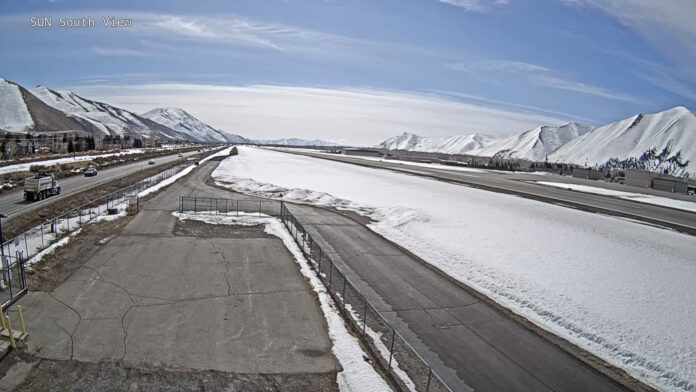
Government stimulus, airline changes, vaccine distribution may spell good times, challenges
By Eric Valentine
First came additional direct flights. Six cities now fly direct to the Wood River Valley. And although New York is not one of those paths, last month JetBlue announced direct flights from JFK Airport to Boise, just a rental car ride away. While on the West Coast, Allegiant Air added a direct flight from Orange County to the Treasure Valley, too.
Then came the now-hiring announcements from the TSA via Friedman Memorial Airport’s website iflysun.com: “The Transportation Security Administration is launching recruitment efforts nationwide to fill over 6,000 Transportation Security Officer (TSO) positions by summer 2021.”
Next was the “light at the end of the tunnel” thanks to the COVID-19 vaccine. St. Luke’s is doing its best to distribute doses efficiently with a new registration process it rolled out March 8.
And now there are fresh talks of airport expansion in Hailey, with consulting firm Mead & Hunt telling Friedman board members its counter space and parking lot aren’t big enough. Mead & Hunt was the architect that nearly doubled the size of the airport years ago.
Finally, by end of week, you can expect to see a $1.9 trillion stimulus package become federal law. How big is that? It’s $300 billion more than the 2009 Obama stimulus and the 2008 Bush bailout, combined.
So the question is: Are you ready for an economic boom?
“When you look at certain economic sectors, we’ve been on the rise really since last summer,” said Mike McKenna, the Valley’s chamber of commerce executive director. “Real estate and recreation-based businesses are just booming at record levels.”
Overall, that’s a good thing, but McKenna says when he fields calls from out-of-towners asking for advice on setting up a business there, his biggest piece of advice is to make housing part of any business plan. For instance, it’s very easy to hire someone from outside the Valley, and inadvertently put them in a position where it’s hard for them to find an affordable, commute-friendly, spacious-enough place to live.
“There’s no work shortage here, but there is a housing one,” McKenna said. “Just a few years ago a waiter in the Valley could make $40,000 a year and possibly even buy a house. Now, they’d be lucky to afford rent if they could even find a place.”
Some Solutions
No one imagines that any plan of action is going to entirely solve the growing housing shortage the entire southwest part of Idaho has been seeing the past few years. But there are some steps that can be taken.
An example? McKenna points to the recent decision by Hailey City Council to allow for more building of accessory-dwelling units (ADUs), commonly known as “mother-in-law apartments” or “granny flats.” Specifically, the new housing ordinance allows residents of Deerfield, Northridge and Northstar subdivisions, and more, to build this sort of housing.
Other jurisdictions in the Valley could conceivably make similar zoning changes, all of which not only provide more affordable places to live, but contribute to the construction economy, too. Moreover, it sustains a wider spectrum of construction, since it’s a different type of build project than, let’s say, mega-mansions in Sun Valley.
McKenna is not alone in his other hope for the Valley: for everyone, especially new arrivals, to relax. As COVID restrictions figure to continue being lifted and as more folks move to Idaho, crowds and traffic and parking constraints will rise.
“The running joke I’m hearing a lot these days is how people now honk their horns at you to complain, not to say hi,” McKenna said. “We’re still a small Idaho town, we expect people to be friendly.”


